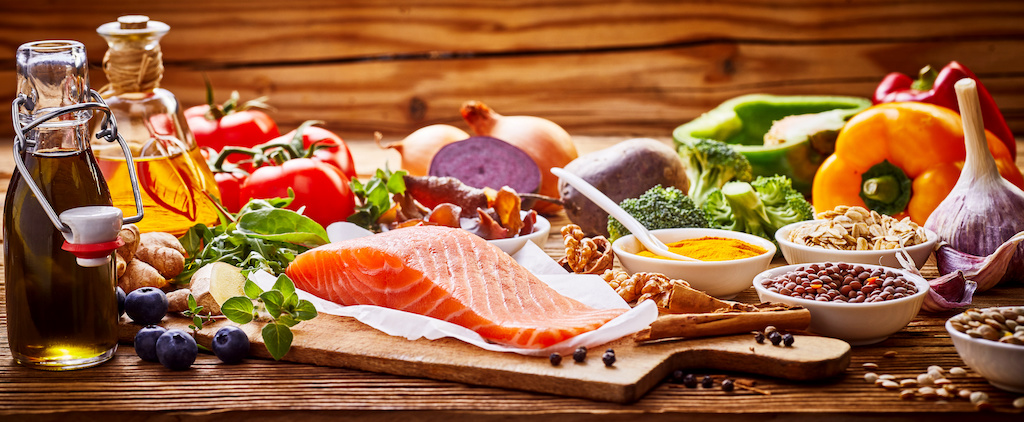The Paleo diet seeks to bring us closer to the way our ancestors ate, with few processed foods and more local products, and is appealing to many athletes. But is it really compatible with sustained athletic performance? Discover the impact of this diet on physical performance and some advice on adapting it to your activity.
What is the Paleo Diet?

The Paleo diet emerged in the early 1980s, supported by Stanley Boyd Eaton’s research, and is based on the premise that in the Palaeolithic era, before the invention of agriculture, our ancestors were healthier than with a modern diet rich in processed products and starchy foods. What did hunter-gatherers eat? Fresh fruit, meat, seeds and suchlike.
Ingredients Used in the Paleo Diet
Here are the basic principles of the Paleo diet:
- Lots of fruit and vegetables, mainly fresh: root vegetables, heirloom vegetables, green vegetables, onions, squashes and so on
- As few grains and legumes as possible, making it a very low-carb diet
- No dairy products
- Local meat or game and oily fish
- Eggs; preferably free-range
- Seeds and oilseeds to provide good plant-based fats
- No sugar (a refined product), bread, cakes, ice cream or other processed foods
To find out if an ingredient is suitable for the Paleo diet, ask yourself whether it could have been eaten during prehistoric times. To avoid imposing a restrictive diet on yourself, be flexible: some very healthy fruits and vegetables may not have existed at the time but could have been eaten by our ancestors if they had known about them. Often, the adoption of a Paleo diet goes hand in hand with a local food-based diet, which applies the logic of adapting one’s consumption to one’s environment.
The Health Benefits of the Paleo Diet
The benefits of the Palaeolithic diet are numerous:
- Reduced risk of cardiovascular disease, diabetes and certain cancers, which are frequent causes of death in Western societies
- Maintenance of a healthy weight, thus a lower risk of obesity and associated health problems
- Reduction of certain food intolerances and intestinal inflammation
- Reduced fatigue
- Various additional benefits
As with any diet, it is necessary to balance your meals. Some nutritionists point out the lack of carbohydrates or the high protein content of the Paleo diet. The large amounts of protein are compensated for by oilseeds to help regulate acidity in the body.
What Impact Can the Paleo Diet Have on Sports Performance?

Can we adopt the Paleo diet when we play sports and workout? For many athletes, the answer is yes! A diet rich in proteins, both animal and vegetable-based, encourages muscle development. This vitamin-rich diet also provides minerals and other important nutrients for good health and performance. The Paleo diet is often suitable for bodybuilders.
Nutritionists’ main reservations concern endurance sports. The usual dietary recommendations for long-distance exertion are 60% carbohydrates, 20% protein and 20% fat. In the Paleo diet, this ratio is closer to 20% carbohydrates, provided by fruits, seeds, roots and sometimes ancient cereals, with very few complex carbohydrates, 40% protein and 40% fat.
Paleo athletes explain that their energy comes mainly from fats, which results in high energy, little fatigue and, paradoxically, rapid fat burning during exercise.
Reconciling the Paleo Diet and Sport: Our Advice

To adapt the Paleo diet to your sporting activities, it is essential to know your training schedule to take into account the intensity of your exertion and the length of the sessions.
The Paleo diet can reach its limits, especially during intense training sessions, when operating at more than 85% of the maximum heart rate. In this case, incorporating a higher proportion of complex carbohydrates helps to provide the body with the necessary energy.
If in doubt, seek the advice of a nutritionist to see if this diet is suitable for you and adjust the proportions of nutrients to suit your activity.
Regardless of what sport or discipline you practice, it is possible to adapt your diet to your training schedule. Even if you don’t follow the principles of the Paleo diet to the letter all year round, you can use it to your advantage.
To get started, visit iFit®, with lots of balanced Paleo recipe ideas for athletes. Continue your immersion in the lifestyle of our ancestors by trying out Paleo fit training.
Check out our Health & Fitness page for more advice.
